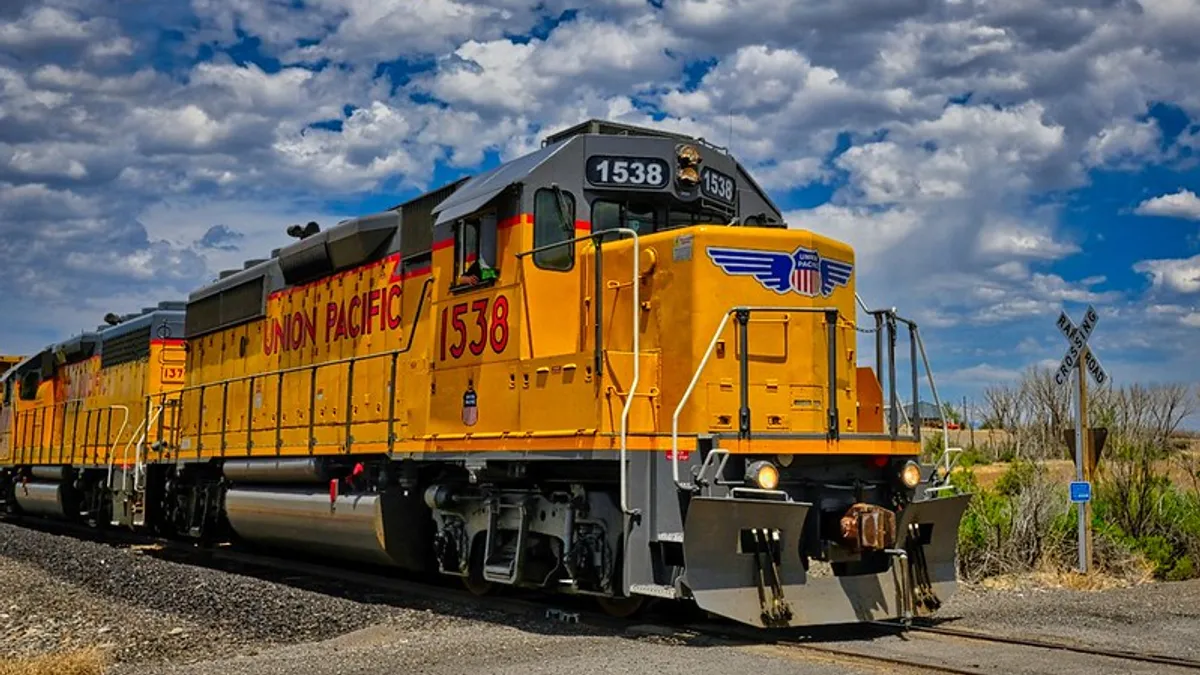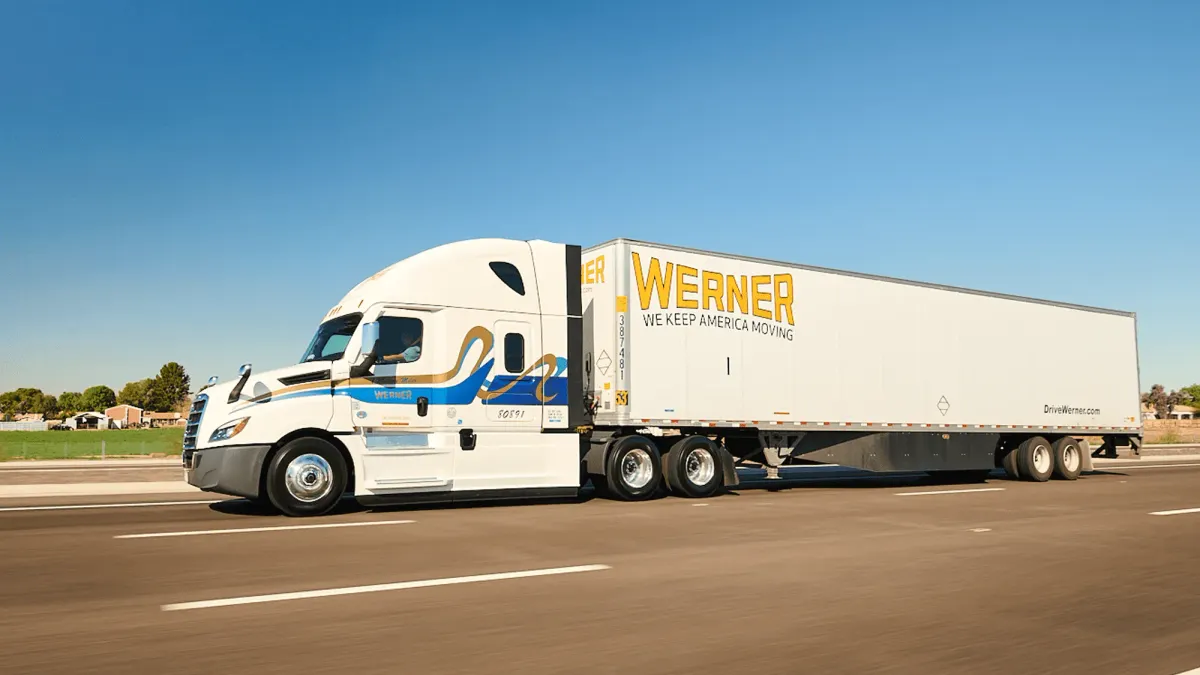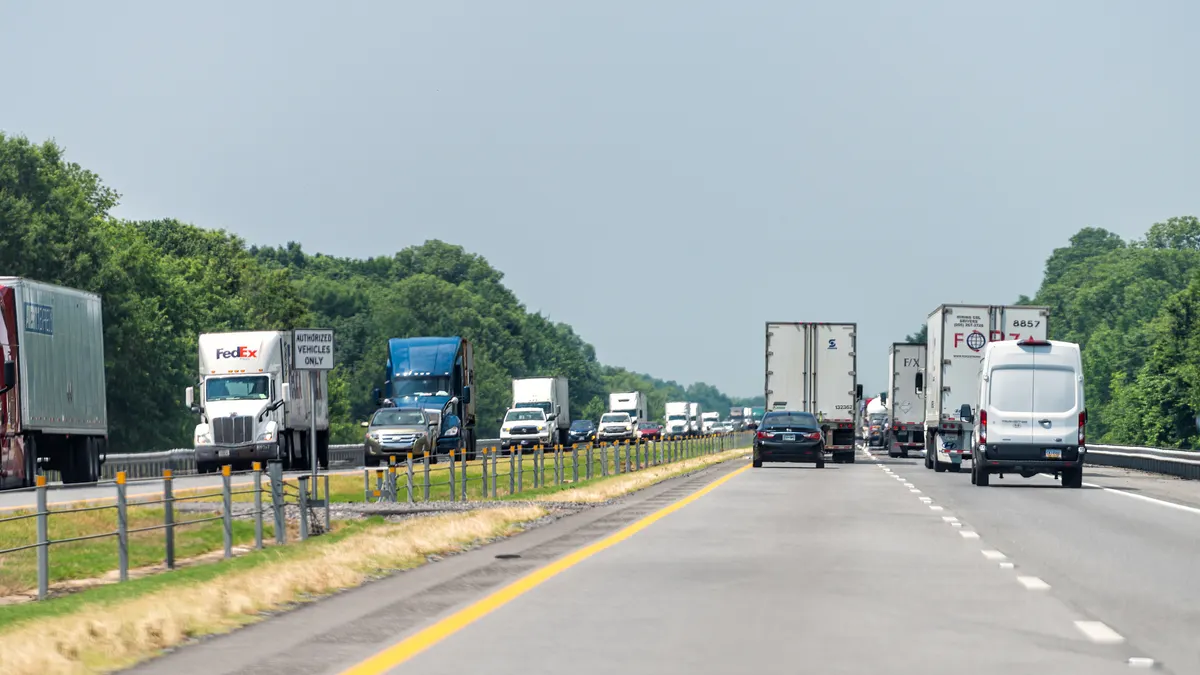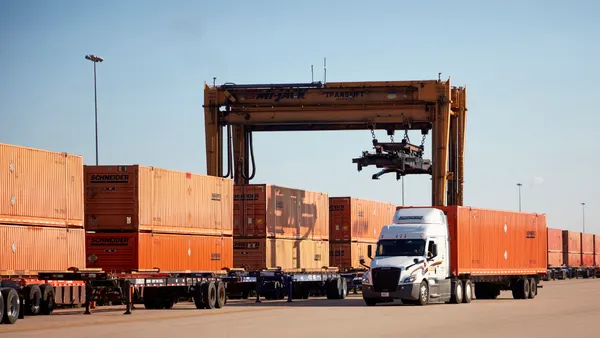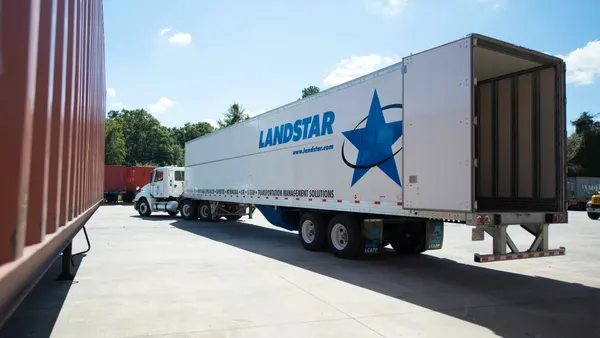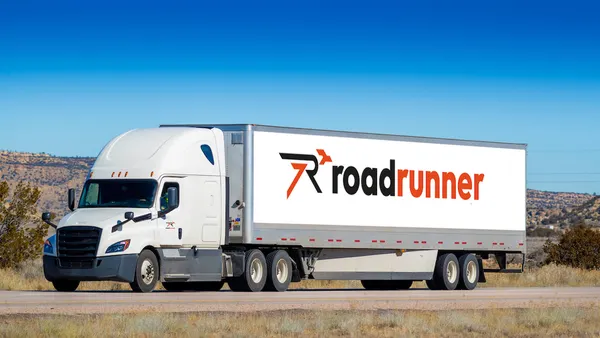Dive Brief:
- Union Pacific expanded its hours at a near-dock rail facility by the Port of Los Angeles to align with the port's goal to move to 24/7 operations, Kristen South, a spokesperson for the railroad, confirmed Tuesday.
- The railroad's Intermodal Container Transfer Facility, known as ICTF, began operating on a full 24/7 schedule as of Sunday. Previously, the facility was open "148 of 168 hours per week," South said. "We've opened those remaining 20 hours to support our customers and provide them every opportunity to move freight in and out of the terminal."
- The extended hours come as trucking carriers report congestion and constrained capacity among their rail and intermodal partners. "I believe our rail providers are not immune to" challenges recruiting labor, J.B. Hunt President of Intermodal Darren Field said on an earnings call Friday.
Dive Insight:
The news of Union Pacific's expanded hours comes less than a week after the Port of Los Angeles announced a goal to operate on a 24/7 schedule. In a statement on LinkedIn, the port said collaboration with Union Pacific had contributed to rail wait times reducing by more than half in the last 30 days.
Carriers are doing what they can to facilitate the movement of goods after President Joe Biden called on private stakeholders to follow the Port of Los Angeles' lead in operating on a 24/7 schedule.
"Now we need the rest of the private sector chain to step up, as well," said Biden. "This is not called a 'supply chain' for nothing," he said, before listing trucking firms and railroads among a list of stakeholders that needed to act.
Union Pacific is no stranger to the effects of congestion. Earlier this year, the railroad had to suspend outbound service from Los Angeles to avoid backlogs at its inland intermodal terminals. At the time, the railroad reached out to port officials and ocean carriers to better coordinate the flow of goods, planned a new inland facility, and identified operating gaps at ICTF.
"Drayage and warehouse operations in major markets have been slow due to outbound drayage processing," the railroad said in an August letter to the Surface Transportation Board. "Union Pacific recognizes the current difficulty for dray carriers to manage efficiently the outbound movement of containers once they are in a stacked location."
Drayage providers have struggled to quickly move freight due to bottlenecks at the ports. In the past, drayage drivers could complete six to seven jobs daily. But now, due to chassis being mispositioned, they can make closer to three moves each day.
Schneider President and CEO Mark Rourke called container throughput "frustrating" on an earnings call in the summer. The congestion even led C.H. Robinson to impose a $175 per container drayage congestion surcharge through the end of the year for many of the top U.S. ports, including Los Angeles and Long Beach.
Prior to this week, Union Pacific's ICTF was operating on a 24-hour schedule for only five days a week. "The exceptions were early Sunday morning and late Sunday into Monday when we weren't seeing any gate activity from trucks," South said.
The Port of Los Angeles has been working to address the pile of container ships queued off the coast. Gene Seroka, executive director at the Port of Los Angeles, said during a media briefing on Thursday that a 24/7 schedule will be a first step toward enhancing productivity.
"It's incumbent upon us again to squeeze every minute and hour of productivity out, the more cargo we can get out the gates via truck and rail leaves more room to get that next shipment," he said.
Sarah Zimmerman and Shefali Kapadia contributed to this story.



